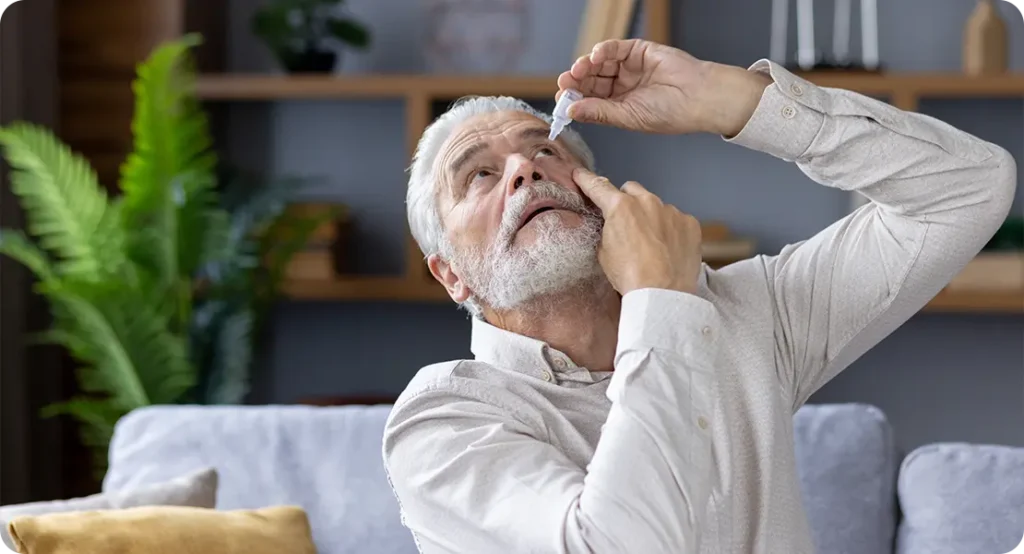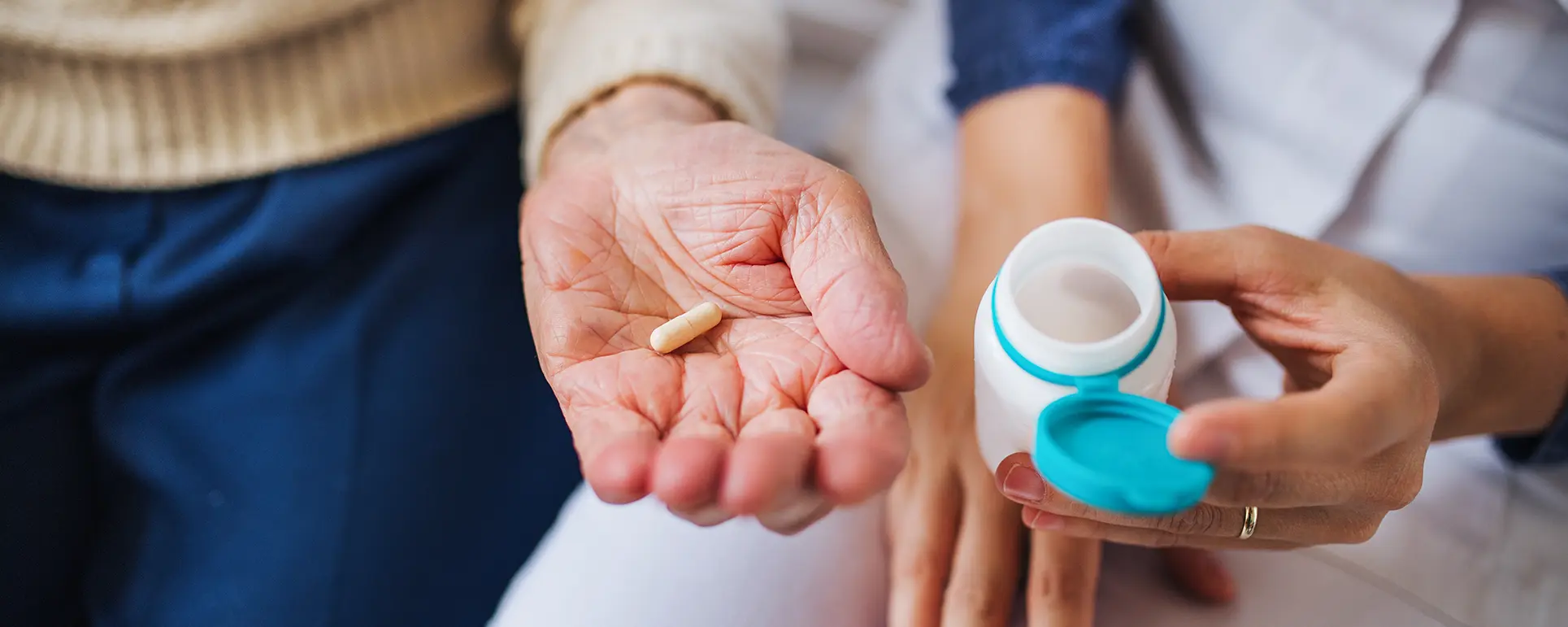If you’re on a beta blocker—whether as a tablet for your heart or as an eye drop for glaucoma—it’s completely normal to wonder how that medicine fits into the plan for cataract surgery. You might have seen warnings on the leaflet about slow pulse, wheeze, or interactions with anaesthetics and thought, “Is this going to cause trouble on the day?” The short answer: in most cases, cataract surgery is safely performed while you continue your usual beta blocker. But there are some important details to get right—especially if you have asthma or a naturally low heart rate, or if your glaucoma drops include timolol or another beta-blocker.
This guide walks you through what happens before, during, and after cataract surgery if you take beta blockers. I’ll explain the difference between oral and topical (eye-drop) beta blockers, why your surgical and anaesthetic team care about them, and the simple steps that keep everything running smoothly. I’ll also share red flags to watch for at home and answer the most common questions patients ask.
Key point up front: people who are already on long-term beta blockers for heart conditions are usually advised to continue them through cataract surgery. Starting a new beta blocker shortly before surgery without a clear reason is not recommended.
What beta blockers are—and why they matter for cataract surgery
Beta blockers reduce the effects of adrenaline and noradrenaline on the heart and circulation. In everyday terms, they lower heart rate and blood pressure and can blunt the body’s “speed-up” response to stress. They’re used for:
- Heart conditions: high blood pressure, angina, heart rhythm problems (e.g., atrial fibrillation), and after heart attacks. Common tablets include bisoprolol, atenolol, metoprolol, propranolol, carvedilol, and nebivolol.
- Glaucoma: topical drops reduce the fluid made inside the eye and lower eye pressure. Common eye-drop beta blockers include timolol, levobunolol, betaxolol (more heart-selective), and combinations such as timolol–dorzolamide or timolol–brimonidine.
Anaesthetists and eye surgeons pay attention to beta blockers because they can:
- Lower heart rate (bradycardia) and blood pressure, which may affect how much sedative you need.
- Mask early signs of stress or pain (e.g., your pulse may not rise as usual).
- Interact with other drugs that influence the heart and circulation.
- In the case of eye-drop beta blockers, be absorbed into the bloodstream and behave like a small systemic dose—especially in older adults.
For cataract surgery specifically (usually done with eye drops plus a small local anaesthetic and light sedation), these effects are manageable when your team knows what you’re using and when you last took it.
The critical distinction: oral beta blockers vs beta-blocker eye drops

Oral beta blockers (tablets or capsules)
- Act on the whole body and have a predictable effect on heart rate and blood pressure.
- If you’ve been on them for months or years, your body is “used to” them. Stopping suddenly can be risky, potentially causing rebound high blood pressure, fast heart rate, or chest pain.
- Peri-operative guidelines for non-cardiac surgery emphasise continuing chronic beta-blocker therapy rather than stopping and avoiding routine new starts just before surgery without a specific indication.
Beta-blocker eye drops (topical)
- Designed to act locally in the eye, but a meaningful percentage can enter the bloodstream via the tear duct and nasal lining, bypassing first-pass liver metabolism. This can lead to slow pulse, low blood pressure, fatigue, dizziness, and in susceptible people wheeze or breathlessness. (PubMed)
- Non-selective agents such as timolol affect both beta-1 (heart) and beta-2 (lungs) receptors. In people with asthma, non-selective beta-blocker drops can reduce lung function and increase the chance of exacerbations; even a single dose has been shown to drop FEV₁ in sensitive individuals. (PMC)
- Simple technique matters: pressing on the inner corner of the eyelids (punctal occlusion) or gently closing the eyelids for a few minutes after instilling drops significantly reduces systemic absorption—often by more than 60%—and lowers the risk of side effects.
How your pre-operative assessment uses this information
At your pre-assessment, expect to be asked for a complete medication and eye-drop list. It really helps to bring the actual boxes or bottles or a written list that includes:
- Medicine name and dose (e.g., “bisoprolol 5 mg every morning”, “timolol 0.5% twice daily”).
- When you took the last dose.
- Any breathing issues (asthma/COPD), dizziness, fainting, or very low pulse you’ve noticed.
- Other eye drops (e.g., brimonidine, dorzolamide, latanoprost), as some combinations can compound systemic effects.
Your nurse or anaesthetist will usually record your baseline blood pressure and pulse. If your resting heart rate is already very low (say, in the 40s) or you’ve had recent dizzy spells, they may adjust the plan—perhaps minimising sedative use or asking your GP/cardiologist whether your dose is still right for you.
Should you take your beta blocker on the morning of surgery?
In most cases, yes—take your usual oral beta blocker with a small sip of water. This is consistent with modern peri-operative guidance for low-risk procedures like cataract surgery. Suddenly stopping long-term beta blockers can destabilise your cardiovascular system and is generally avoided.
If you’re on beta-blocker eye drops (e.g., timolol), you’ll typically continue them as usual unless your ophthalmologist has advised a change for glaucoma reasons. If you have asthma or COPD, discuss with your eye doctor well before the surgery day whether a non-beta-blocker regimen (e.g., a prostaglandin analogue or carbonic anhydrase inhibitor) might be better for you. Where drops are continued, use punctal occlusion to reduce systemic absorption.
Important nuance: starting a new beta blocker shortly before surgery (for example, to “protect the heart”) is not standard for cataract patients and can increase risks if done indiscriminately. Large trials have shown harm when high-dose beta blockers were initiated just hours before non-cardiac surgery.
What your anaesthetist does differently when you’re on a beta blocker
- Plans lighter sedation: Because your pulse won’t “tell” us as quickly when you’re stressed or uncomfortable, we rely more on your voice and blood pressure, keeping sedation minimal so you feel relaxed but can respond.
- Monitors closely: We keep an eye on your heart rate and rhythm. If your pulse dips lower than your normal range or you feel faint, we’ll intervene promptly.
- Chooses vasopressors carefully: Beta blockers can blunt your response to some drugs that raise blood pressure. Anaesthetists know this and titrate small doses with careful monitoring.
- Anticipates reflexes: Eye surgery can stimulate vagal reflexes that slow the heart. While this is much more common in strabismus or paediatric eye surgery than in modern cataract operations, the team is prepared to treat bradycardia if it occurs. (Again, cataract is typically low-risk here.)
Specific considerations for glaucoma beta-blocker eye drops

If you use timolol (alone or in a fixed combination), read this section closely:
- Systemic effects are real: Up to ~60–80% of an eye drop can be absorbed systemically via the tear ducts and nose, bypassing first-pass metabolism. In older adults—especially those with smaller body mass or on multiple heart/blood pressure medicines—this can be enough to cause noticeable bradycardia, fatigue, light-headedness, or even fainting.
- Asthma/COPD: Non-selective beta-blocker drops can reduce lung function and increase the risk of exacerbations. If you’ve ever wheezed after using your drops—or you use a reliever inhaler more after starting them—tell your doctor. A switch to a beta-1 selective drop (betaxolol) or a non-beta-blocker option may be safer.
- Punctal occlusion: After putting in the drop, gently close your eyelids and press the inner corner of your eye (where the eyelids meet your nose) for 2–5 minutes. This simple step can reduce systemic absorption by around two-thirds and minimise side effects without reducing the pressure-lowering effect in the eye.
- Drug interactions matter: Some antidepressants (e.g., paroxetine, fluoxetine) and other heart drugs (e.g., verapamil) can raise timolol levels or compound its effects on heart rate. Bring a full medication list to pre-assessment so these can be cross-checked.
What happens on the day of surgery
- Arrive as instructed and continue any fasting guidelines. Take your oral beta blocker with a sip of water unless told otherwise. Use your eye-drop beta blocker if it’s part of your routine, and practise punctal occlusion after instilling it.
- We’ll confirm your pulse and blood pressure. If your heart rate is unusually low for you—say, dipping into the low 40s—and you feel faint, tell the nurse; this sometimes leads us to adjust sedation or timing.
- Anaesthesia is usually topical or sub-Tenon’s (local around the eye). You’ll be comfortable and awake, with light sedation as needed.
- During surgery, if your pulse drifts down or you feel woozy, we’ll respond—typically with minor adjustments that you won’t even notice.
- After surgery, you’ll sit up, have a drink, and we’ll re-check your observations before you go home. If you’re continuing glaucoma drops, you’ll be told exactly when to restart them in the operated eye (often the same day or after the surgeon’s post-op review if the pressure is low).
When might the plan be different?
- Very slow resting heart rate (especially if you feel dizzy or faint): We may ask your GP/cardiologist to review your dose, or we’ll simply keep sedation minimal and monitor closely.
- Asthma or COPD plus timolol drops: Your eye doctor may change your regimen before surgery or after the first eye to reduce respiratory risks.
- Heart block or a history of fainting/syncope: That combination with topical or oral beta blockers needs careful review.
- Recent dose changes (up or down) or a newly started beta blocker: If this was started in the last few days for non-urgent reasons, we may discuss postponing until your regimen is stable. (Starting high-dose beta blockers just hours before surgery has been linked to higher stroke and death risks in non-cardiac surgery—another reason we avoid last-minute changes.)
What to watch for at home
Call your surgical team or seek urgent care if you notice:
- Fainting, near-fainting, or unusual dizziness.
- Breathlessness or wheeze, especially if you have asthma/COPD. (PMC)
- Very slow pulse (e.g., consistently under 45–50 beats per minute with symptoms like light-headedness).
- New chest discomfort or unusual fatigue.
If you use timolol or another beta-blocker eye drop, keep using punctal occlusion every time, and stick to the one-drop rule—more drops won’t work better but will increase systemic exposure.
Practical tips to minimise risk

- Bring all your medicines (or a clear list) to pre-assessment and on the day.
- Don’t stop long-term beta blockers unless a doctor specifically tells you to.
- Use punctal occlusion after each glaucoma drop. Set a timer for 2–5 minutes.
- Tell us about asthma/COPD or any past issues with wheeze on timolol; alternatives exist.
- Limit caffeine on the morning if your pulse runs low; it can mask how you’re feeling.
- Ask openly about anything that worries you—there are nearly always straightforward adjustments we can make.
Frequently Asked Questions (FAQ)
1) Should I take my usual beta-blocker tablet on the morning of cataract surgery?
Yes—unless your surgeon or anaesthetist has told you otherwise, continue your regular oral beta blocker with a sip of water; stopping abruptly can cause rebound increases in heart rate and blood pressure, while continuing is the default approach for low-risk procedures like cataract surgery.
2) Do beta blockers make the anaesthetic more risky?
Not in a way that prevents you having cataract surgery; they just change how we plan your sedation and monitoring, because your pulse may not rise as much with anxiety or discomfort, and your blood pressure may sit lower, so we titrate drugs more gently and watch your observations closely throughout.
3) I use timolol eye drops—can they affect my heart or breathing?
They can, because some of the drop reaches your bloodstream; in older adults or people on other heart medicines, timolol can slow the pulse or lower blood pressure, and in people with asthma or COPD it can provoke wheeze or reduce lung function, which is why we screen for breathing problems and may recommend alternatives.
4) Should I stop my timolol before surgery?
Usually, no; most patients continue their glaucoma regimen through cataract surgery, but if you have asthma/COPD, very low pulse, or past side effects, your ophthalmologist may switch you to a different drop; don’t make changes yourself—ask the clinic to advise and, if needed, they’ll coordinate with your optometrist or GP.
5) How do I put in glaucoma drops to reduce side effects?
Instil one drop, gently close your eye, and press the inner corner (where the lids meet the nose) for 2–5 minutes to block the tear duct; this punctal occlusion technique lowers systemic absorption (and side-effects) without weakening the pressure-lowering effect in the eye.
6) What if my resting heart rate is already low?
Plenty of people on beta blockers have pulses in the 50s; we look at the whole picture—how you feel, blood pressure, and ECG history—and can still proceed safely with lighter sedation; if your pulse is unusually low for you and you’re dizzy or faint, tell us so we can adjust the plan or get advice from your GP/cardiologist.
7) I have asthma—are beta-blocker drops safe for me?
Non-selective beta-blocker drops (like timolol) can reduce FEV₁ and increase the chance of an asthma flare, especially around the time they’re started; many patients with asthma are better on non-beta-blocker glaucoma therapy or a more selective agent, so raise this early so your doctor can tailor your regimen.
8) Could starting a new beta blocker right before surgery protect my heart?
For cataract surgery, which is very low risk, there’s usually no benefit; large trials have shown that starting high-dose beta blockers just hours before non-cardiac surgery can increase stroke and death, so routine “just-in-case” initiation is avoided unless a cardiologist has a specific reason. (PubMed)
9) Will beta blockers affect my pupil dilation or the surgeon’s view?
Beta blockers don’t act like dilating or constricting drops, so they don’t usually interfere with pupil enlargement; your surgical team uses separate dilating medicines (and sometimes intracameral agents) to achieve a safe, wide pupil.
10) After surgery, what symptoms should make me call for help?
Contact the clinic promptly for fainting, severe dizziness, breathlessness/wheeze, chest discomfort, or an unusually slow pulse with symptoms; these can signal an excessive beta-blocker effect or another issue that needs timely assessment—don’t wait it out if you feel unwell.
Final thoughts
Cataract surgery and beta blockers generally mix perfectly well—the trick is transparency and small, practical precautions. Keep taking the medicines your heart and eyes rely on unless you’re told otherwise, bring the real medication list to pre-assessment, and use simple techniques like punctal occlusion if you’re on glaucoma beta-blocker drops. For people with asthma or very low pulse, a pre-emptive conversation about alternatives to timolol can head off avoidable side effects. With that groundwork, your operation is highly likely to be smooth, quick, and uneventful—just as cataract surgery should be.
This guide is general information and not a substitute for personal medical advice. Always follow the instructions from your surgeon, anaesthetist, and GP/cardiologist for your specific situation.
References
- Writing Committee Members (2024) 2024 AHA/ACC/ACS/ASNC/HRS/SCA/SCCT/SCMR/SVM Guideline for Perioperative Cardiovascular Management for Noncardiac Surgery. Journal of the American College of Cardiology, 84(19), pp. 1869–1969. Available at: https://pubmed.ncbi.nlm.nih.gov/39320289/ (Accessed 14 August 2025).
- POISE Study Group; Devereaux, P.J. et al. (2008) Effects of extended-release metoprolol succinate in patients undergoing non-cardiac surgery (POISE trial): a randomised controlled trial. The Lancet, 371(9627), pp. 1839–1847. Available at: https://pubmed.ncbi.nlm.nih.gov/18479744/ (Accessed 14 August 2025).
- Mäenpää, J. and Pelkonen, O. (2016) Cardiac safety of ophthalmic timolol. Expert Opinion on Drug Safety, 15(11), pp. 1549–1561. Available at: https://pubmed.ncbi.nlm.nih.gov/27534869/ (Accessed 14 August 2025). (DOI link available via PubMed; this is the only DOI-sourced item requested.)
- Morales, D.R. et al. (2016) Respiratory effect of beta-blocker eye drops in asthma: population-based study and meta-analysis of clinical trials. BJP Open (British Journal of Clinical Pharmacology Open), Article PMC5338116. Available at: https://pmc.ncbi.nlm.nih.gov/articles/PMC5338116/ (Accessed 14 August 2025).
- Flach, A.J. (2008) The Importance of Eyelid Closure and Nasolacrimal Occlusion Following the Ocular Instillation of Topical Glaucoma Medications. Transactions of the American Ophthalmological Society, 106, pp. 138–145. Available at: https://pmc.ncbi.nlm.nih.gov/articles/PMC2646444/ (Accessed 14 August 2025).

